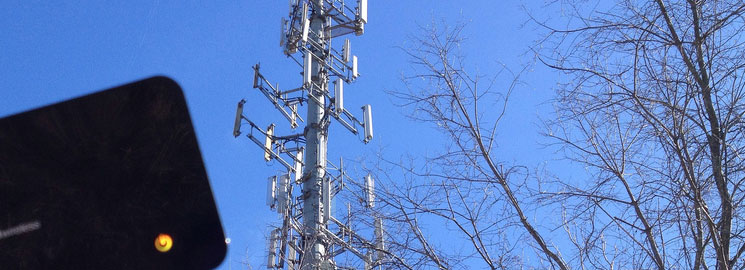Mobile phones have become ubiquitous and basic communications tools—now used not only for phone calls, but also for accessing the Internet, sending text messages, and documenting the world. Unfortunately, mobile phones and it’s infrastructure were not originally designed for privacy and security. Not only can they be weak at protecting your communications, they can also expose you to new kinds of surveillance risks. Just recently, Canadian court records revealed that the RCMP could secretly target and intercept Canadians’ mobile phones using specialized covert surveillance techniques in an attempt to cut down on crime.
So, on June 10th, a Montreal judge lifted a publication ban on details surrounding the shooting death of a high-ranking New York crime family member who was shot and killed in Montreal. Court records in the Montreal-area case show that the RCMP used wireless signal catchers to target the suspects’ BlackBerry cell phones. They used that information to intercept and unscramble cellphone messages as part of an organized crime investigation.
At the moment, it is unclear how this data was collected and more just as important decrypted and deciphered from the Blackberry cell phone since the RCMP will not disclose their methods but it is suspected they may be using a controversial and indiscriminate mass-surveillance device called a “Sting Ray” – a technology that has been already used in the United States and has come under much criticism by privacy advocates. And so if this were the case it would mean that Canadians have no way of knowing if their personal cellphone data and conversations are safe from prying eyes; especially if this technology ended up in the wrong hands.
Stingray devices, or International Mobile Subscriber Identity (IMSI)-catchers mimic cellphone towers in order to trick nearby cellphones into connecting to them. Once they are connected, the Stingray user can collect information transmitted by the phone, including its location, data transmissions, texts, emails and voice conversations. Currently there is no reliable defense against all IMSI catchers. (Some apps claim to detect their presence, but this detection is imperfect.) Many Canadian civil rights groups have expressed concerns and tried to find out whether the RCMP are using this type of device but are not really getting any answers at the moment.
The bottom line is if you require your phone conversations or any of your data to be secure, you might want to think twice when using your cellphone. Using the old fashioned wired phone or meeting with people face to face MIGHT ensure a little more security.


Leave a Reply